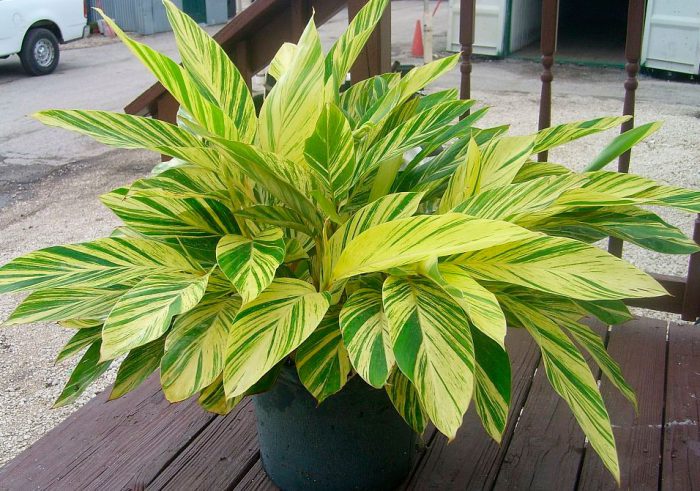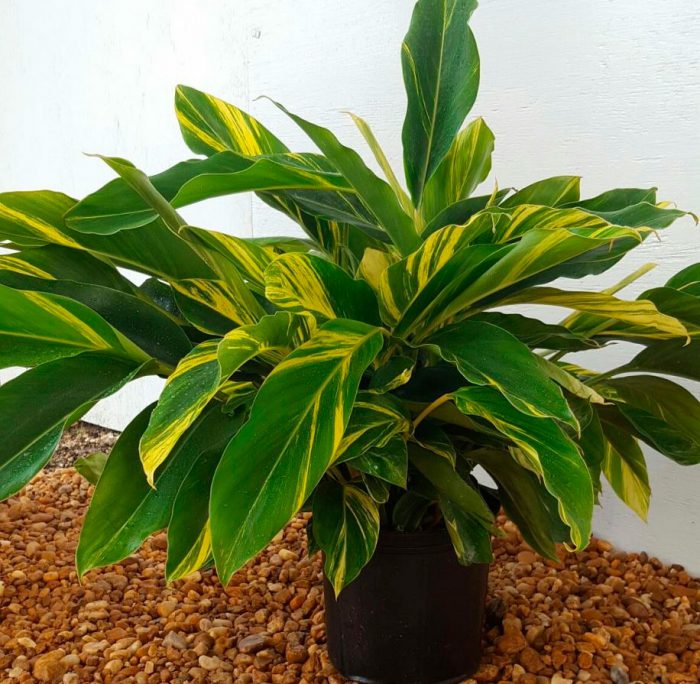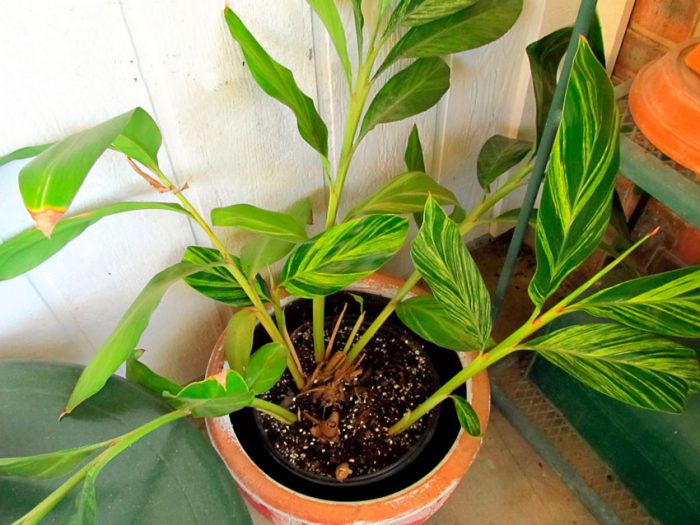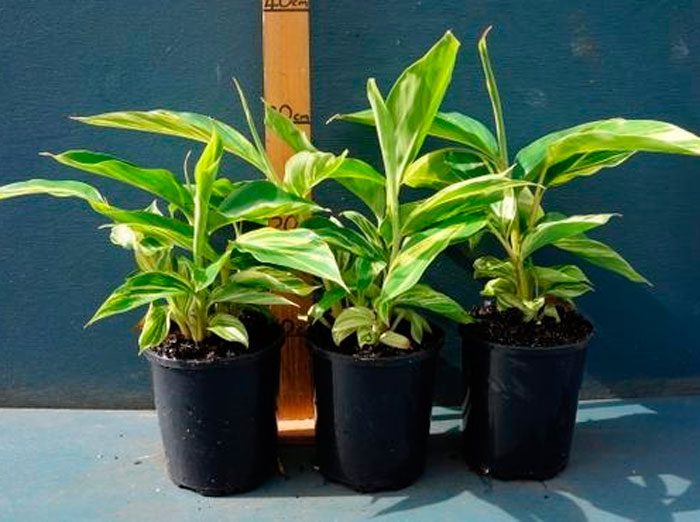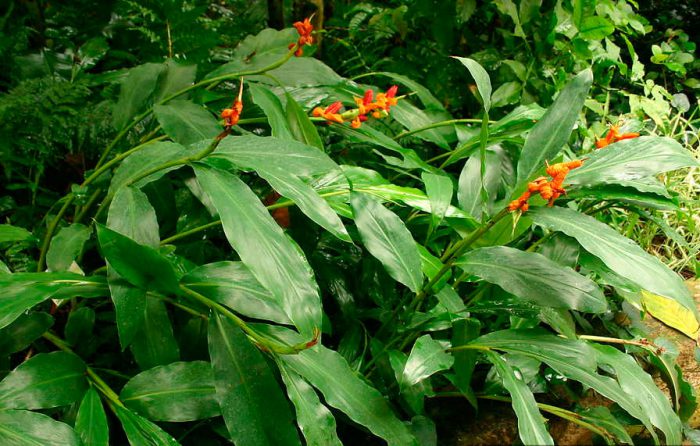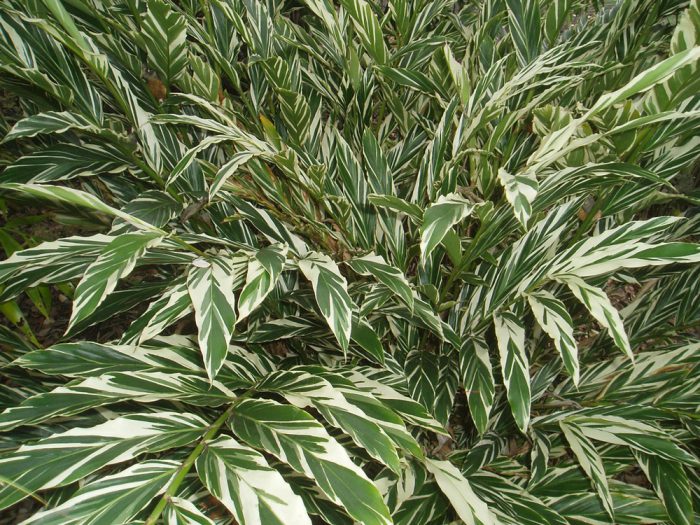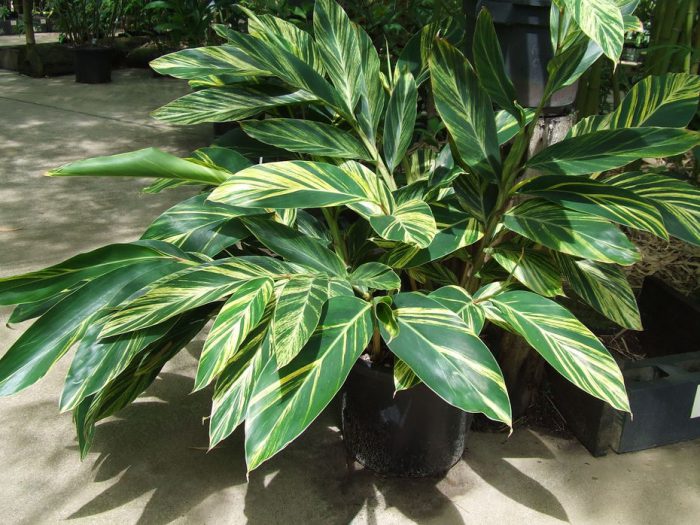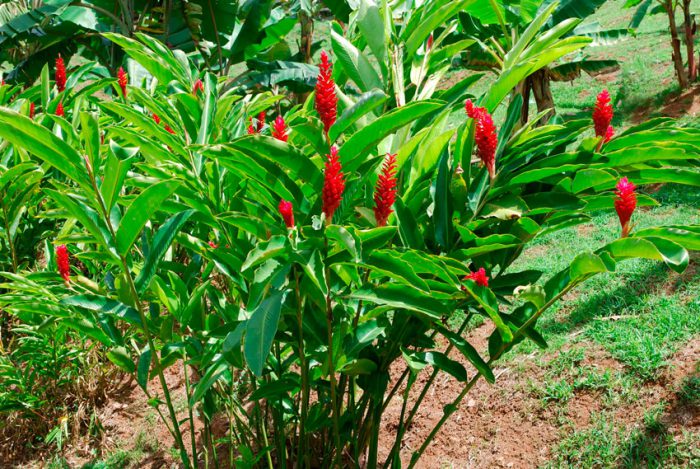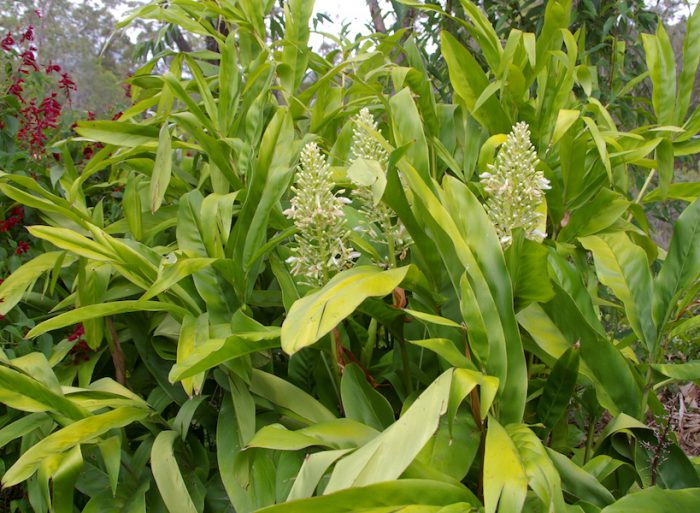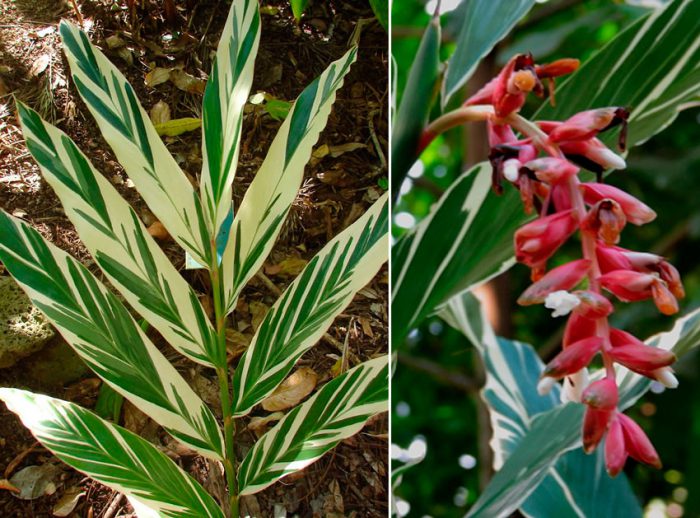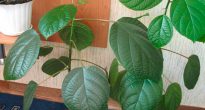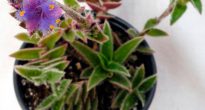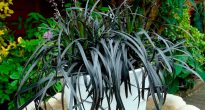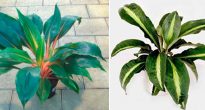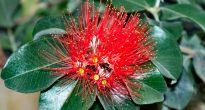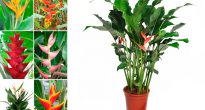Bush plant alpinia (Alpinia) is directly related to the ginger family (Zingiberaceae). It is native to the subtropical and tropical regions of Southeast Asia.
This genus was named after the Italian Prosper Alpino, who is a rather famous traveler and physician.
Such a plant is a perennial. It has brown-red tuberous rhizomes that have a pungent and strong odor. A powerful, leafy stem grows out of each branch of the rhizome. In this regard, if alpinia develops well, then it has about 40 stems. Lanceolate leaves, two-rowed, cover the shoot quite tightly.
The apical inflorescences are racemose, spike-shaped or panicle-shaped, and they bear large flowers. The flower color is white, red or yellow. Inflorescences can hang down or be directed vertically upward (depending on the species). The fruit is presented in the form of a box. If you grind or break a leaf plate, you can smell a specific smell. There are types of alpinia whose rhizomes are used in oriental medicine. And this rhizome is also used as a spice.
Alpinia care at home
Illumination
Loves light very much. You should choose a place with bright, but always diffused lighting. In summer, shading is required from direct sunlight. In winter, the plant must be supplemented.
Temperature regime
In spring and summer, alpinia grows normally at temperatures from 23 to 25 degrees. However, in winter, the room should not be too cool (at least 15-17 degrees).
Humidity
High air humidity is required, so the foliage must be systematically moistened from the sprayer.
How to water
In the spring and summer, the potted substrate should always be slightly damp (not wet). With the onset of autumn, watering should be gradually reduced. In winter, watered only after the top layer of the substrate dries out 2-3 centimeters deep.
Top dressing
Top dressing is carried out in spring and autumn once every 2 weeks. For this, fertilizers are used for flowering indoor plants.
Transplant features
The transplant is carried out in the spring.Young plants should be transplanted once a year, and adults should be transplanted when necessary (for example, if the roots no longer fit in the pot). To prepare the soil mixture, it is necessary to combine humus, leafy soil, sand and peat, which must be taken in a ratio of 2: 2: 1: 2.
Reproduction methods
You can propagate the seeds and divide the rhizome.
It is recommended to divide the rhizome in spring together with a transplant. It should be borne in mind that there should be 1 or 2 kidneys on each division. It is recommended to sprinkle the cuts with chopped charcoal. Disembarkations are planted in wide low containers. Stems tend to emerge and grow fairly quickly.
Seeds are sown in January. The optimum temperature is 22 degrees. Timely watering, protection from drafts, as well as systematic ventilation are necessary.
Diseases and pests
Differs in high resistance to pests. It rarely gets sick with proper care.
Video review
Main types
Alpinia officinalis (Alpinia officinarum Hance)
This rather large plant is a perennial. Its brownish-red strongly branched rhizome can be up to 2 centimeters thick. Several shoots extend from the rhizome. The alternately sessile leaves have a linear shape and reach 30 centimeters in length. A short apical spike-shaped inflorescence bears flowers. The petal lip is white with reddish stripes on its surface. The fruit is a capsule.
Alpinia sanderae
This compact plant is a perennial. Its height, as a rule, does not exceed 60 centimeters. The stems are highly leafy. The sessile green leaves can be up to 20 centimeters long. They have a linear shape, and whitish oblique stripes are located on their surface. The apical panicle inflorescence consists of crimson flowers.
Alpinia drooping (Alpinia zerumbet)
This rather large plant is a perennial. Its height can reach 300 centimeters. Lobe leaf plates are narrow at the base, and widen towards the end. The drooping racemose inflorescences, reaching a length of 30 centimeters, consist of whitish-yellow flowers.
There are several varieties with variegated foliage:
- «Variegata Chinese Beauty»- on the surface of the leaf plates there is a marble pattern of dark and pale green color.
- «Variegata»- leaf plates have a large width, and on their surface there are yellowish stripes of different direction and width.
- «Variegata dwarf"- this small plant reaches a height of about 30 centimeters. The flowers are white and the leaves are greenish yellow. This variety is quite compact, and it is most convenient to grow it at home.
Alpinia purpurea (Alpinia purpurata)
The height of this perennial reaches 200 centimeters. The bracts are red and the flowers are white.
Alpinia galanga
This perennial has a smooth, almost cylindrical rhizome, with a diameter of 2 centimeters. The stems can reach a height of 150 centimeters. The whole-edged lanceolate leaves reach about 30 centimeters in length. Dense, conical racemose inflorescence bears white flowers.
Alpinia vittata
Such a plant is a perennial. On the surface of the elongated sheet plates, there are stripes of cream or white. The flowers are pale green, and the bracts are pink.

